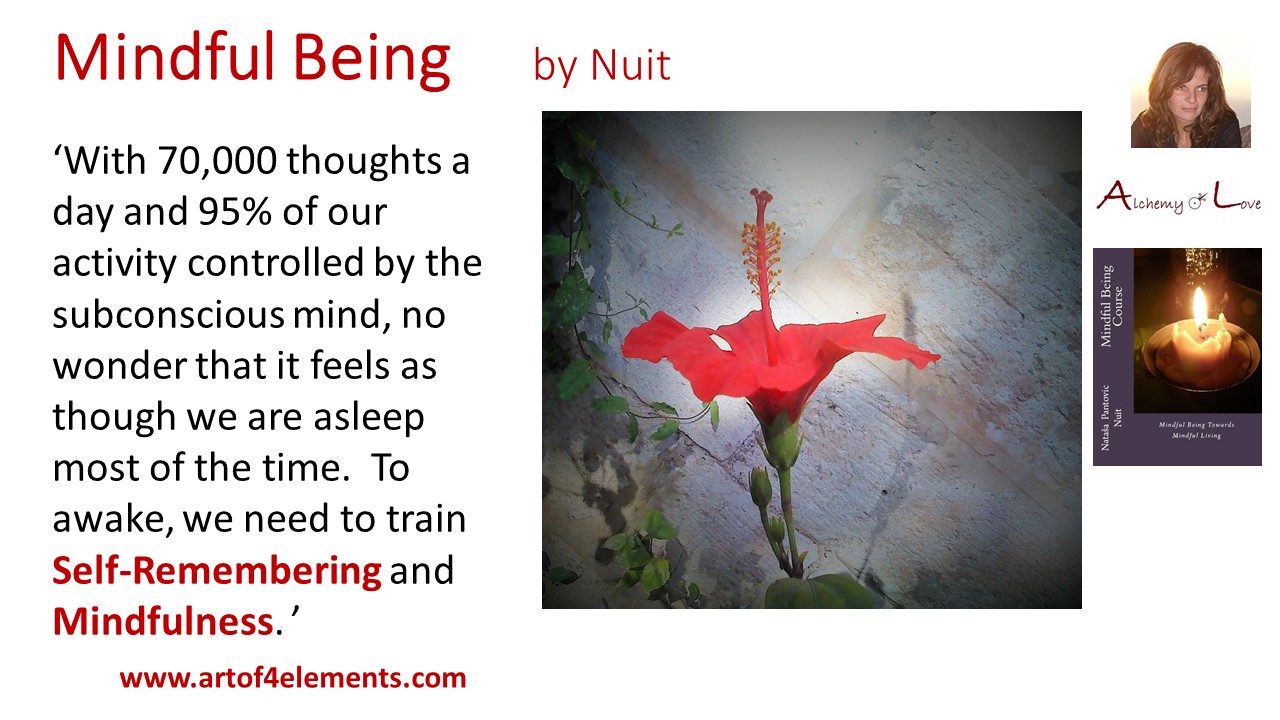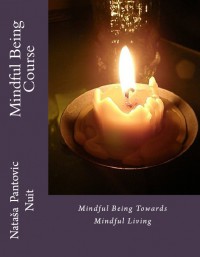Nataša Pantović
Nataša Pantović
Nataša Pantović, MSc Economics, is Serbian / Maltese Author, Management Consultant, Adoptive Parent and Ancient Worlds Consciousness Researcher living in Malta.
Published Author since 1991...
AoL Mindfulness Series of Books

AoL (Art of eLements) Research into Mysticism Art and Ancient Worlds. Applied Psychology & Philosophy from Tao to Neo-Platonism to Jung to deeper understand Intuitive Wisdom & Pure Ratio. In search of Language of God exploring symbols & sound frequencies, we have published 44 ISBANs with 8 Authors in 3 languages.
Consciousness Research
AoL Mindfulness books are:
- A-Ma Alchemy of Love by Nataša Pantović (AoL Mindfulness Book #1) or ebook
- Art of 4 Elements: Discover Alchemy through Poetry by Jeni Caruana, Christine Cutajar, Jason Lu (AoL Mindfulness Book #2) or ebook
- Mindful Eating with Delicious Raw Vegan Recipes by Olivera Rosic (AoL Mindfulness Book #3) or eBook
- Mindful Being towards Mindful Living Course by Nataša Pantović (AoL Mindfulness Book #4) or eBook
- Conscious Parenting: Mindful Living Course for Parents by Ivana Milosavljevic and Nataša Pantović (AoL Mindfulness Book #5) or eBook
- Chanting Mantras with Best Chords by Goce Nikoloski (AoL Mindfulness Book #6)
- Conscious Creativity: Ancient Europe's Mindfulness Meditations by Nataša Pantović (AoL Mindfulness Book #7) or eBook
- Spiritual Symbols with their Meanings by Nataša Pantović (AoL Mindfulness Book #8)
- Tree of Life: a Journey into the Field of Dreams by Nataša Pantović (AoL Mindfulness Book #9) or eBook
- Metaphysics of Sound: in Search of the Name of God by Nataša Pantović MSc Economics Paperback or eBook
- Ama Dios (4 Aol Consciousness Books Combined) by Natasa Pantovic
- Spring, book of Aphorisms by Dr Rudolf Ragonesi translated in Italian and French
- Summer, book of Aphorisms by Dr Rudolf Ragonesi translated in Italian and French
- Autumn, book of Aphorisms by Dr Rudolf Ragonesi translated in Italian and French
- Winter, book of Aphorisms by Dr Rudolf Ragonesi translated in Italian and French
Authors == Nataša Pantović MSc Economics == Olivera Rosić MSc Forestry == Ivana Milosavljević MEdu Special Needs == Goce Nikoloski == Jason Lu BA Arts == Christine Cutajar MA Creativity == Jeni Caruana BA Arts == Dr Rudolf Ragonesi
Check the Interview Featured Authors Nataša Pantović

Thanks for your <3
Please Like! & Subscribe
For more Updates and Videos
Subscribe to us : https://www.youtube.com/user/Artof4elements
Follow Us In Other Social Sites:
Blog: https://www.artof4elements.com/
Instagram:https://www.instagram.com/artof4elements/
Twitter:https://twitter.com/AlchemyLoveNuit
Fb: https://www.facebook.com/NatasaNuitPantovic
Pinterest: https://www.pinterest.com/NatasaPantovicNuit/
Wikihow Articles https://www.wikihow.com/User:Nuit

Tapping the Brain's Magic

 With traditional educational methods – its curriculum and its focus on examinations – students quickly lose motivation and interest for science and its magic.
With traditional educational methods – its curriculum and its focus on examinations – students quickly lose motivation and interest for science and its magic.The human brain is truly extraordinary. A healthy brain has some 200 billion neurons. The conscious mind controls our brain for only five per cent of the day, whereas the subconscious mind has control of our thoughts 95 per cent of the time.
A human being has 70,000 thoughts per day- Natasa Pantovic
A human being has 70,000 thoughts per day. The brain requires up to 20 per cent of the body’s energy despite being only two per cent of the human body by weight.
Somewhere within our brain we have a potential for higher mathematics, complex physics, art, and amazing richness of thoughts, feeling, and sensations.
However, although we are mostly controlled by our brains, we are yet to learn how to best use its potential.
Perhaps this is the task of the next phase of our evolution – utilising our brains better, understanding the 95 per cent of its subconscious functionality, becoming more creative, less bombarded by useless thoughts, more focused, and more peaceful.
In her book My Stroke of Insight, brain scientist Jill Bolte Taylor, who recovered from a massive left hemisphere blood clot, talks about her experiences during the eight years it took her to completely recover.
She was unable to walk, talk, read, write or recall her life.
However, she refers to this state of her being as Nirvana, a word used to describe a profound peace of mind.
Describing the right brain, she says it is like a parallel processor. It thinks in pictures, it is non-verbal, it is non-linear and creative. The right brain has no sense of time, it is playful, it sees humour, and it is lost in the flow.
The right brain is compassionate andis associated with the heart. It is intuitive and takes us into the peacefulness of the world around us.
The left brain is like a serial processor; it is interested in the past and future. It thinks in language and is concerned with details. It is logical and it is the critical, analytical part of our being.
Traditional educational methods, its curriculum and its focus on examinations emphasize the development of the ‘left brain’ hemisphere. With this approach, students quickly lose motivation and interest for science and its magic.
Two fundamental assumptions of formal education are that students retain the knowledge they acquired in schools, and that they can apply it in situations outside the classroom. But is this correct? How much do we really remember and how relevant is this knowledge?
Geniuses like Albert Einstein, Leonardo da Vinci and Wolfgang Amadeus Mozart created their masterpieces from a place of inspiration and creativity. It is likely they had an ability to fully utilise the virtues of both brain hemispheres.
To understand children’s capability to learn, educational psychology develops and applies theories of human development.
Rudolf Steiner’s model of children’s development links physical, emotional, mental and moral development. In his approach, he values equally the rational and imaginative approaches to learning.
So schools inspired by his approach teach art and dancing not only to awaken and strengthen the children’s expression and to stimulate imagination, but also as a way of understanding and mastering cognitive thinking.
An example of an alternative method of learning is a movement therapy included in the Waldorf curriculum called Eurythmy. The word comes from Greek, meaning a beautiful or harmonious rhythm.
Eurythmy works with mathematical forms, beginning with a straight line and curve, and proceeding to more complex geometric figures developing a child’s coordination and concentration. Rods or balls are also used in exercises to develop precision in movement. Philosophically, it acknowledges a child’s capacity to communicate through non-verbal gestures.
Eurythmy is made up of discreet movements that represent various phonetic sounds. The feelings and thoughts have gestures that are beyond our conscious awareness. Eurythmy attempts to explore the variety of feelings and thoughts through movement, language, rhythm, colour and form. Through this art, children learn the wisdom of emotional intelligence that helps their holistic growth.
If these ideas resonate with you or if you are interested in offering this type of education for your children,e-mail alternativeschoolmalta@gmail.com.
www.artof4elements.com
Independent journalism costs money. Support Times of Malta for the price of a coffee.
Support Us
 1
1






